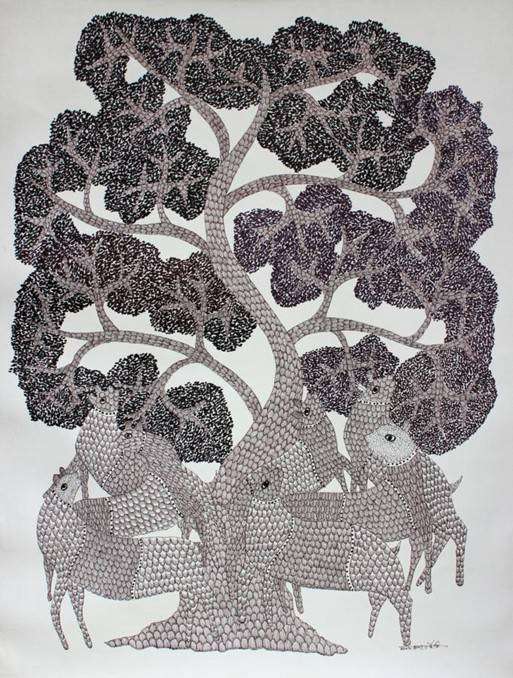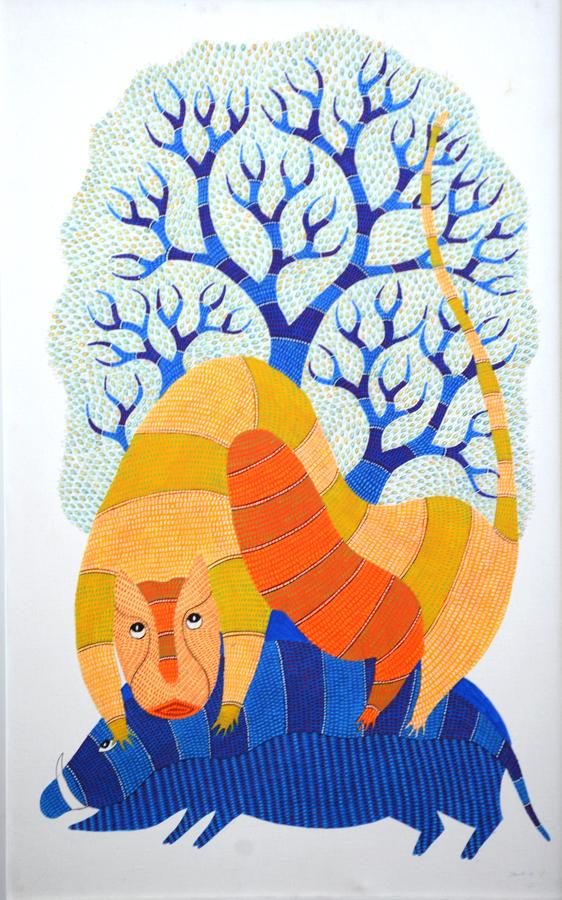By Team Mojarto

Tribal and folk arts upholds the essence of the country. It remains to be a repository of ancestral memories and traditions. It becomes a connection between today and the past, where many traditions and culture is thriving. The rich cultural diversity of India is well reflected in the vivid, distinct and enchanting folk art and crafts. Various painting styles are prevalent across various regions, each representing tradition, customs, and ideologies passed on from one generation to other. Gond art holds a special and significant place in the folk art scenario of the country.
The word Gond comes from the Dravidian word ‘Kond’, which means the ‘green mountain’. Gonds are a tribal community who were pantheists; hence nature became a major theme in Gond art. Gondis believe that every element of nature is inhabited by a spirit which makes it more sacred and holy. Therefore, the depiction of these natural elements- animals, birds, rivers, hills, trees, etc in art at home brings good luck and prosperity.

This popular tribal art was evolved and practised by the Gond tribe of the country. Gond tribes are one of the largest tribal communities in the country found majorly in Madhya Pradesh and Andhra Pradesh. They use this art form to ward off evil and welcome goodness. Today, the art is popular among artists who thrive to preserve and continue the culture and aesthetics of the art and the tribe.
Gond art is characterized by the use of intricate and painstakingly made detailed lines and dots. This art is glorified for its vibrant colours. The paintings are coloured with bright natural colours obtained from natural objects like different coloured soil, charcoal, leaves and saps. It is used on walls plastered with cow dung, which I considered auspicious. Today, artists have transferred the tribal language of expression to paper, canvas and other mediums.

Earlier, Gondis portrayed their connection with nature and surroundings in the art, but today artists are taking up themes of damages caused by man to nature. Gond art draws its inspiration from myths, legends and the daily lives of its people. It is also rooted in folk tales and cultures where the representation of animals, birds, fishes and trees are more evident.